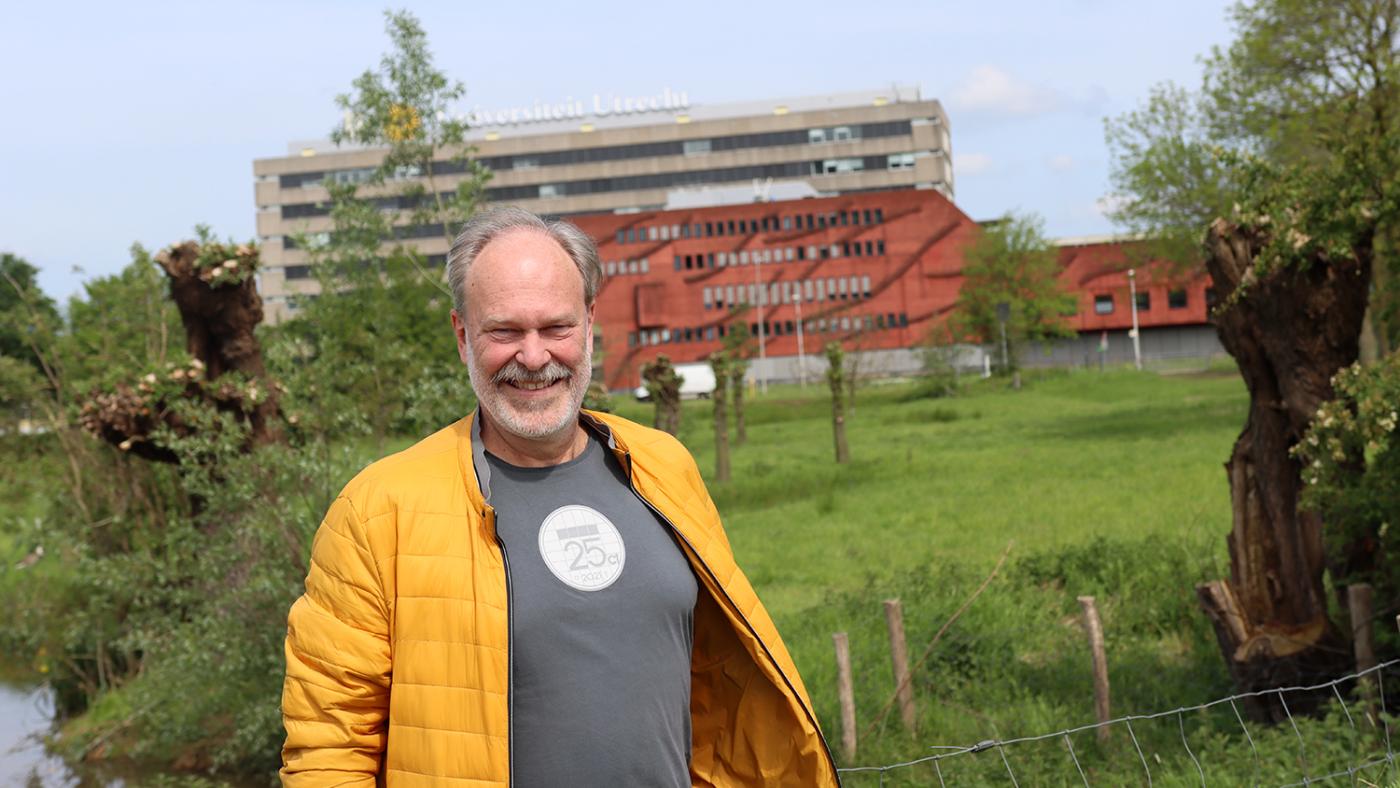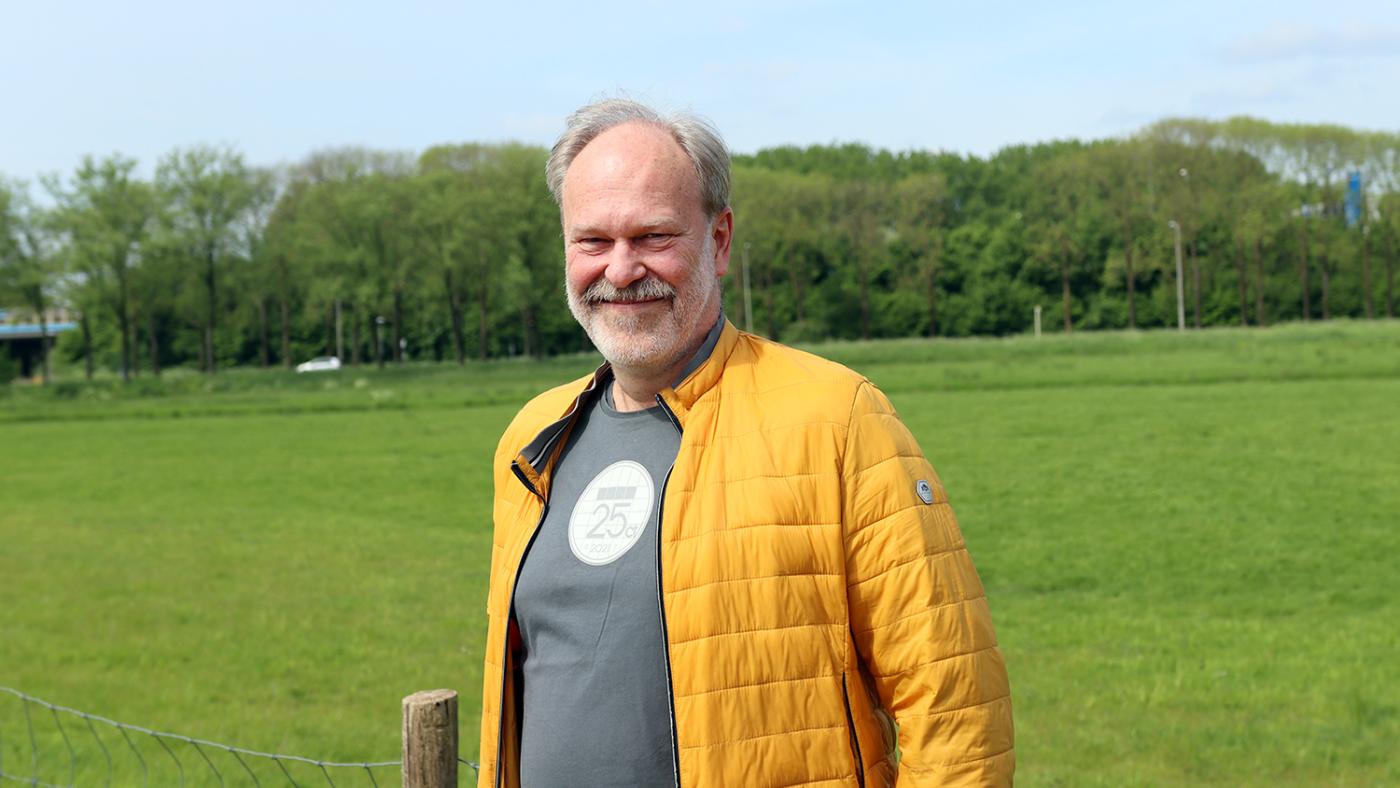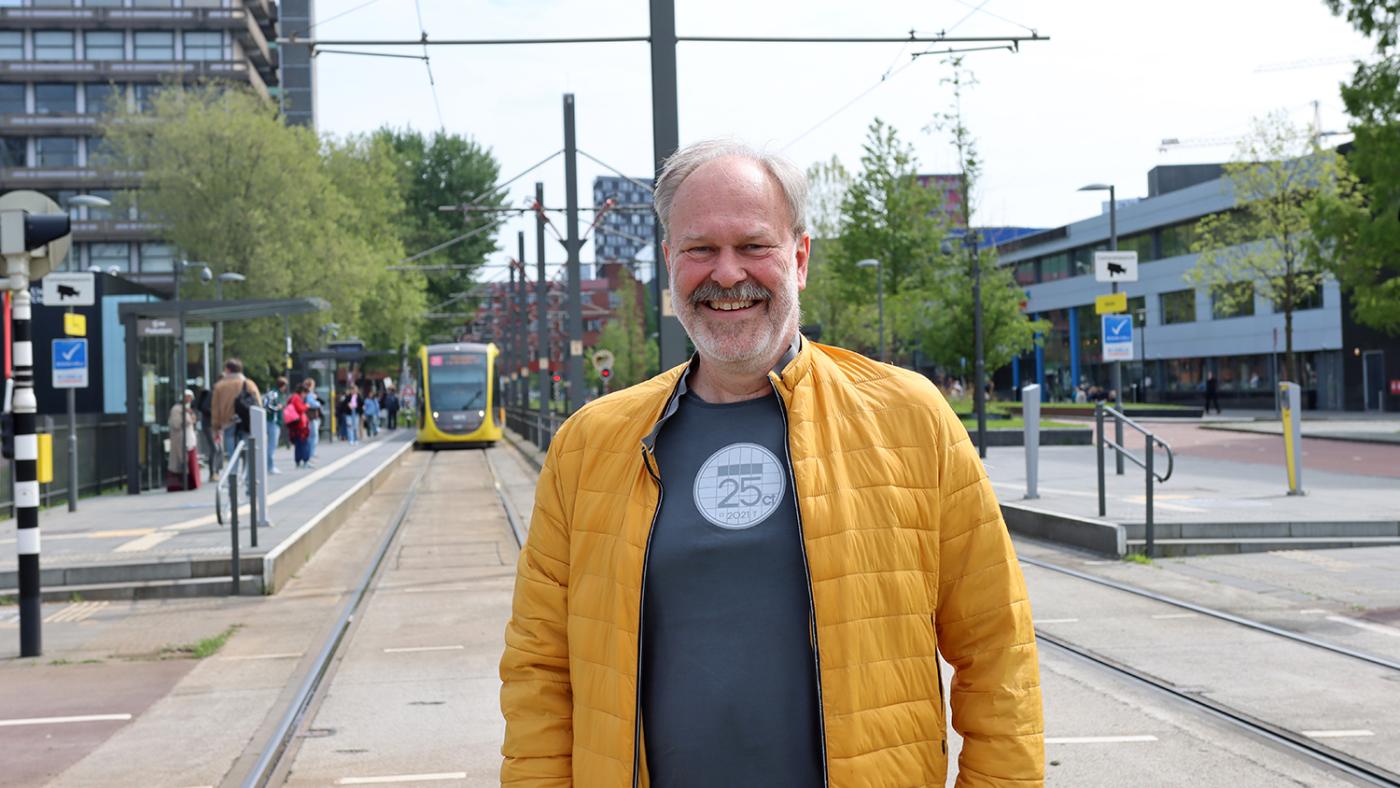Mister De Uithof says goodbye
Ruut van Rossen was the face of UU at Utrecht Science Park for 25 years

A car company that wants to film a commercial at the Educatorium, the Vuelta, which was at some point interested in a stage at Utrecht Science Park, a company that wants to build a new office here, the construction of the tram and the search for a place for a supermarket. These are all subjects the campus manager of Utrecht Science Park deals with. The university is the landowner and therefore determines what can and cannot be done on that land. For the past 25 years, Ruut van Rossen has been the campus manager who oversaw all the small and large requests, on behalf of the university. “When it comes to major decisions, you consult with the Executive Board, but in general there are criteria and you can make the decision independently.” The most important criterion is that UU only grants permission if the activity has a relationship with the university or is good for the university or the students. For example, the company that wanted to film the commercial was rejected, but the Vuelta was allowed to come to promote the university internationally. Only companies that have a link with scientific research are allowed to establish their offices here.

Goodbye
Ruut van Rossen said goodbye to the university in April. That takes some getting used to. Within his department, he is seen as the walking encyclopedia. Van Rossen knows every detail of the area's history and what discussions have taken place in the past. He gives an impression on his own website.
His connection with Utrecht University goes back further than the 25 years that he was campus manager. In 1975 he came to Utrecht to study English and then Linguistics. As a student of the arts, he lived in various buildings in the city centre, especially in Oudenoord. As an active student, he applied for the Faculty of Arts Board. “At that time, I rarely came to De Uithof. Sometimes we had to be there for an exam. It was a remote area with few buildings. It was always windy and rainy.”
After graduating, he started working at the university. “In the 80s, it was difficult to find a job. Through my board work, I managed to get a job within the Faculty of Arts. First at the science shop, then directly under the secretary of the faculty to help with a major project to cluster the parts of the university in the city centre. Until then, the university was spread all over the city in small buildings. That had to come together more, around the Drift, Kromme Nieuwegracht and Trans.”
At the end of the 80s, he joined the Central Department for Housing and Equipment. It was a time of reorganisations and renewed division of tasks between central services and faculties. It was also the time that De Uithof transformed. Initially, there were only three buildings (Trans 1, 2 and 3), but in the early 1980s Centrumgebouw Zuid and Noord were added (now Het Langeveld and Groenman building), and in the 1990s quite a few buildings were added. The then rector Hans van Ginkel and head of construction affairs Aryan Sikkema wanted to give the area a boost with work by leading young Dutch architects. More external partners were also added, such as the Utrecht University of Applied Sciences (HU), the University Medical Center and research institutes and companies. Van Rossen had to co-approve and monitor the construction of all the buildings. “At the HU Education building (the stripy building) there was a problem with maintaining the landscape structure, where you now see the bicycle path. That is why it was stipulated that part of the building would be built so that the waterway and the bicycle path could run underneath. That led to a lot of discussion, but in the end, it was built that way.”

Housing
For a long time, there were discussions about building housing in the area. Van Rossen: “Since the 1960s, the university has gradually moved out of the city centre, partly because it turned out that laboratories in a residential area were not a happy combination. You had to deal with risks related to hazardous substances or problems with vibrations and noise pollution. Until 1975, the area of De Uithof belonged to various municipalities. Part of it belonged to De Bilt, part of it to Zeist, part of it to Bunnik and part of it to Utrecht. In 1975 there was a border correction and the entire area became part of Utrecht. The municipality immediately developed plans for the area. Housing had to be built, which was included in the zoning plan in 1983. But the university objected to this and the conflict escalated. In the end, the Supreme Court decided that the area was owned by the university, and so the wishes of the municipality were overruled. Yet the university also felt responsible for the housing shortage and eventually, it made a U-turn. Housing was allowed, but only for students or PhD candidates of the university. That’s still the case today.”
During his time as campus manager, Van Rossen has seen buildings erected and then demolished. He thinks the Hijmans van den Bergh building of Medicine is one of the buildings most pleasant to look at, because of the space and the light. But he also likes the very first building, Trans 1, the current Ruppert building. “The wide inner street of the property is actually very unique and a fantastic place for people to meet.” Of the most recent buildings, he thinks the Koningsberger building is very successful as a spacious and beautifully designed place where students can attend lectures and study independently. Personally, he has fond memories of the construction of the Máxima Medical Center. “The idea was to develop one national cancer center for children, and Utrecht was considered as a location. We have made it possible for this center to be built here on university land in a relatively short period of time. That was a special achievement.”
The arrival of HU, the construction of student housing and the growth of research institutes has turned a remote corner of the city into a busy, lively centre. “As a result, accessibility became more and more of a point of discussion. Bus lines 11 and 12 were extremely crowded. Something had to be done. This topic has been on the agenda for 15 years. Should there be an HOV lane through the city center or a tram line along the stadium? In the end, it became the tram. The province, municipality and parties in Utrecht Science Park worked closely together. It was a process with many obstacles, for example, we had to ensure that the vibrations and electromagnetic field disturbances would not hinder the research and something extra had to be done to allow the trams to go under the Groenman building. We also talked a lot about the route of the other buses and the ambulances.”

Parking
Another hot topic of discussion in recent years has been the parking policy. “As early as 2017, there were plans to introduce a paid contribution to parking for employees. After all, you want fewer people to come to Utrecht Science Park by car to reduce traffic. But you have to arrange that properly in terms of compensation and you have to coordinate it with the HU and hospital. It also turned out to be difficult to get a consensus on how the privacy of the parkers would be safeguarded. In 2020, all hurdles seemed to have been cleared and the decision was under consideration by the Board. But due to Covid, the need was no longer there. Now that the traffic flow is increasing again, this discussion will return.”
Lively
One of the major themes of the last few years has been the quality of life in De Uithof. The university has made plans to make the area green and more lively. For example, the entrance to the Botanical Gardens should be moved closer to the Leuvenlaan. Residents have been calling for a larger supermarket and more restaurants for years. The sports clubs want more space. Van Rossen has followed the discussions closely, but is less optimistic about the possibilities. “For years, the question has been how viable a supermarket or catering facility is in this area. Throughout the year there are plenty of customers, but in the summer the area is deserted. Most of the residents have also left by then. Is it feasible for a supermarket or catering establishment to bridge that period financially? Especially since these companies have to pay a realistic land price. The idea of building a supermarket in Rijnsweerd has been around for some time. That has a better chance of succeeding because then you can also count on the residents of that neighbourhood. I understand that it is difficult for students to have to travel to a larger supermarket, but many factors play a role. I think the advantage of living on the USP is that you live in a green environment and have a beautiful view.”
Van Rossen bears the honorary title of ‘Mister De Uithof’, so it was hard for him when Utrecht Science Park Foundation replaced the name De Uithof with Utrecht Science Park. “I think the development of the Utrecht Science Park concept is very good. I applaud the growth of an educational centre with research companies and student housing. But as far as I’m concerned, the name shouldn’t have been changed. What does the name Utrecht Science Park actually mean? And why should history give way to that? If there are research companies in De Bilt, you’re not going to change the name, are you? De Uithof is a name with a tradition, which fits this area. But once the city council had decided on it, I of course accepted it.”